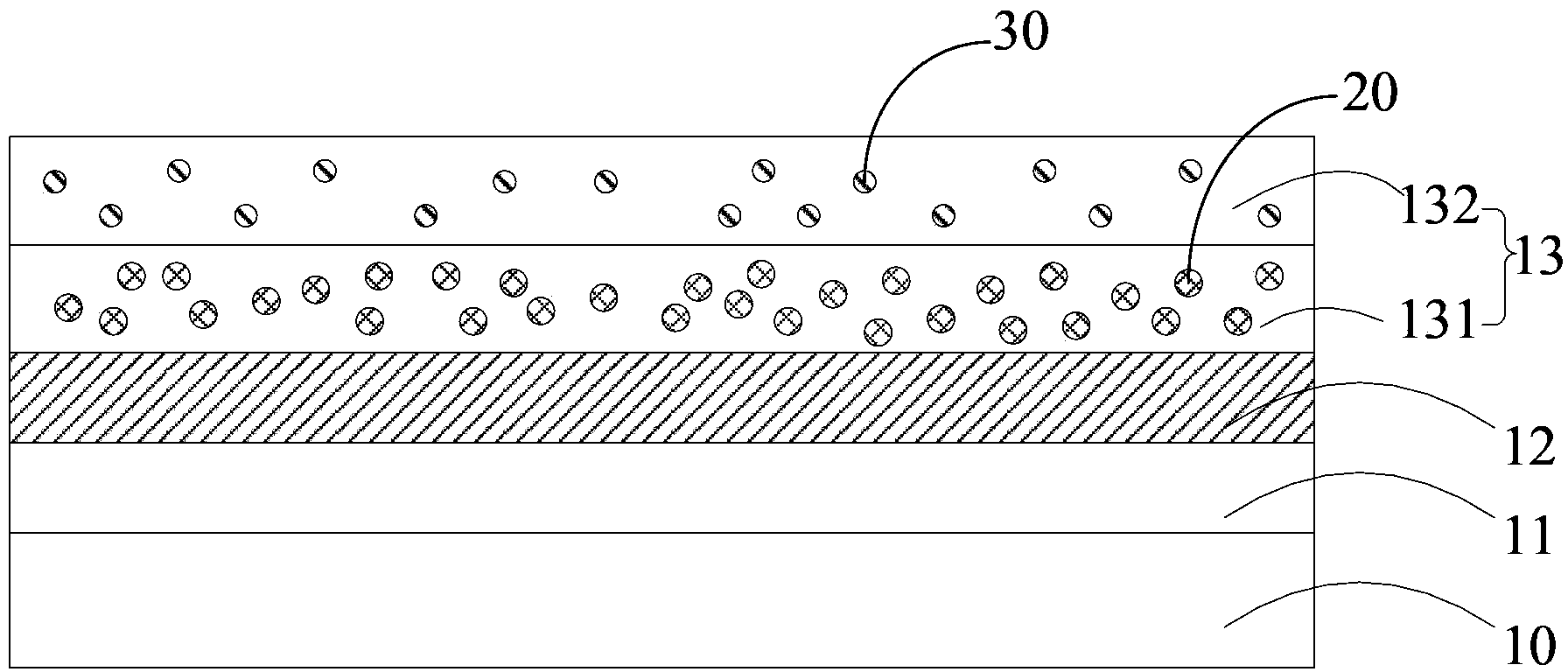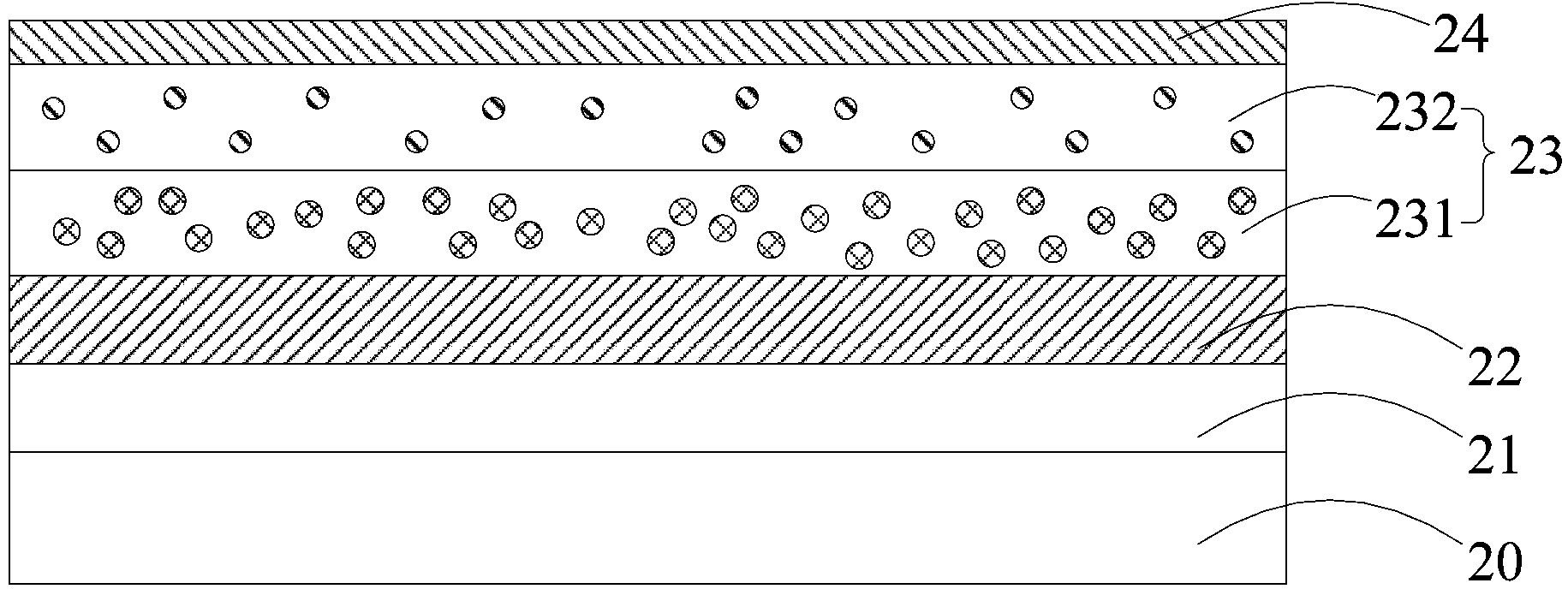Organic light emission diode device and fabrication method thereof
An electroluminescent device and luminescent technology, which is applied in the direction of electric solid-state devices, semiconductor/solid-state device manufacturing, electrical components, etc., can solve the problems of low light-emitting performance, total reflection loss, and low transmittance of light-emitting devices, and achieve luminescence Excellent efficiency, increased light extraction efficiency, and high light extraction efficiency
- Summary
- Abstract
- Description
- Claims
- Application Information
AI Technical Summary
Problems solved by technology
Method used
Image
Examples
Embodiment 1
[0058] A method for preparing an organic electroluminescent device, comprising the following steps:
[0059] (1) Place a transparent glass substrate on a 1×10 -4 In the vacuum coating chamber of Pa, a metal Ag thin film with a thickness of 100nm is prepared on the surface of the substrate as an anode by means of vacuum thermal resistance evaporation;
[0060] (2) Prepare a light-emitting functional layer on the surface of the metal Ag thin film by vacuum thermal resistance evaporation, including a hole injection layer, a hole transport layer, a light-emitting layer, an electron transport layer, and an electron injection layer in sequence;
[0061] Among them, the hole injection layer is made of CuPc with a thickness of 20nm, the hole transport layer is made of NPB with a thickness of 30nm, and the light emitting layer is made of Alq 3 , the thickness is 15nm, and then the electron transport layer is made of TPBi with a thickness of 30nm, and the electron injection layer is ma...
Embodiment 2
[0067] The difference between this embodiment and Embodiment 1 is that the thickness of the first doped layer is 40nm, and the SiO in the second doped layer 2 The mass ratio to metal Au is 10:100, namely SiO 2 The ratio of the evaporation rate to the metal Au is 10:100, where SiO 2 The evaporation rate of Au is 0.2nm / s, and the evaporation rate of Au is 2nm / s.
Embodiment 3
[0069] The difference between this embodiment and Embodiment 1 is that the thickness of the first doped layer is 40nm, and the SiO in the second doped layer 2 The mass ratio to metal Au is 100:100, namely SiO 2 The ratio to the evaporation rate of metal Au is 100:100, where SiO 2 The evaporation rate of Au is 1 nm / s, the evaporation rate of Au is 1 nm / s, and the thickness of the second doped layer is 100 nm.
PUM
| Property | Measurement | Unit |
|---|---|---|
| Particle size | aaaaa | aaaaa |
| Thickness | aaaaa | aaaaa |
| Thickness | aaaaa | aaaaa |
Abstract
Description
Claims
Application Information
 Login to View More
Login to View More - R&D
- Intellectual Property
- Life Sciences
- Materials
- Tech Scout
- Unparalleled Data Quality
- Higher Quality Content
- 60% Fewer Hallucinations
Browse by: Latest US Patents, China's latest patents, Technical Efficacy Thesaurus, Application Domain, Technology Topic, Popular Technical Reports.
© 2025 PatSnap. All rights reserved.Legal|Privacy policy|Modern Slavery Act Transparency Statement|Sitemap|About US| Contact US: help@patsnap.com



